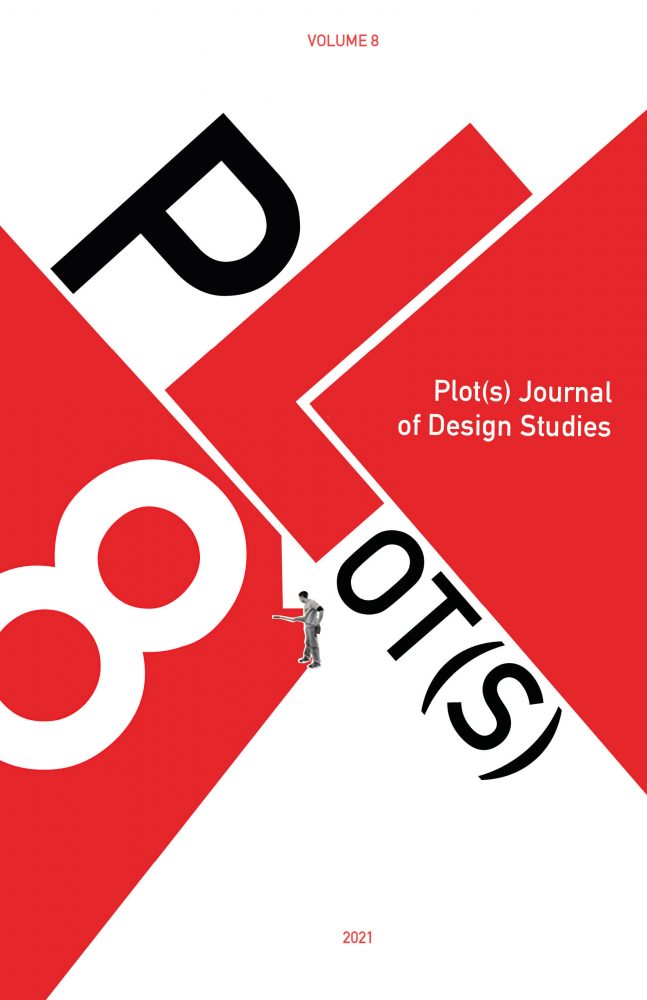Editor’s Letter
John Solomon Hanson

Plot(s) Volume 8 Cover. Design by Annabelle Schneider, 2021.
Beatriz Colomina and Mark Wigley maintain that to talk about design is to talk about the state of our species.1 Appropriately, the researchers, designers, and authors featured in Plot(s) Volume 8 engage with the critical issues facing humans today. The highlighted works in this issue provide novel insights into the manner design produces, mediates, and moderates our experience in the world and the way it has done so in the past.
For this issue, we look at the way design studies offers methods for interpreting the artificial world beyond aesthetic veneers to expose how design intersects with the social, political, and economic dimensions of our lives. The topics explored in this issue are emblematic of the wide and expanding purview of the discipline.
In a coauthored piece by Maanasa Sivashankar and Callan Hajosy, we see a design research proposal for tackling issues of co-design in civic planning projects—namely, how to meaningfully engage youth in the process of redesigning New York City’s bus network. Justin Sorensen considers how post-war corporate interiors sought to materialize and enact regressive social and economic hierarchies. As a follow up from last year’s article on the US-Mexico border, Amanda Forment expanded this critical inquiry by examining the intimate material culture of migration from the perspective of a design historian who is interested in illuminating the role objects play in navigating political borders. This intimate perspective is also historicized by Lucas Teixeira Vaqueiro, who looks at the fraught history of the design of election devices in Brazil and its perceived complexity alongside the election systems we use in the United States, such as the Electoral College. Finally, in an ongoing virtual year marked by interface disorientation, Celine Nguyen reviews a virtual conference about the future of our digital public spheres before going outside and questioning what felt more real in this moment.
If you’re struggling to pin down an overarching theme here, we’ve done our job. Now in our eighth issue, we are committed to defining design as broadly as possible—not only considering issues of conception, form, and use, but also of processes and systems.
As design studies continues to evolve, we hope that the field continues to challenge subject areas and promotes inclusivity, interdisciplinarity, and curiosity in new scholarship. We hope this volume encourages a deeper engagement with design in all its disorienting and jubilant facets.
Plot(s) Journal of Design Studies is an annual peer-reviewed publication run by graduate students and alumni at Parsons School of Design, The New School in New York. A dedicated team of editors, designers, and peer reviewers, from Switzerland to Brazil, made this publication possible. It was a joy and privilege to work alongside them. We would like to acknowledge Plot(s) continued publication to faculty and Managing Editor Claudia Marina, whose deft guidance and support make the journal possible today.
Endnotes
1. Beatriz Colomina and Mark Wigley, Are We Human? The Archeology of Design, (Ennetbaden: Lars Muller Publishers, 2017).↵
View the PDF version of Vol. 8 in its entirety on ISSUU.

 DESIGN STUDIES BLOG
DESIGN STUDIES BLOG

